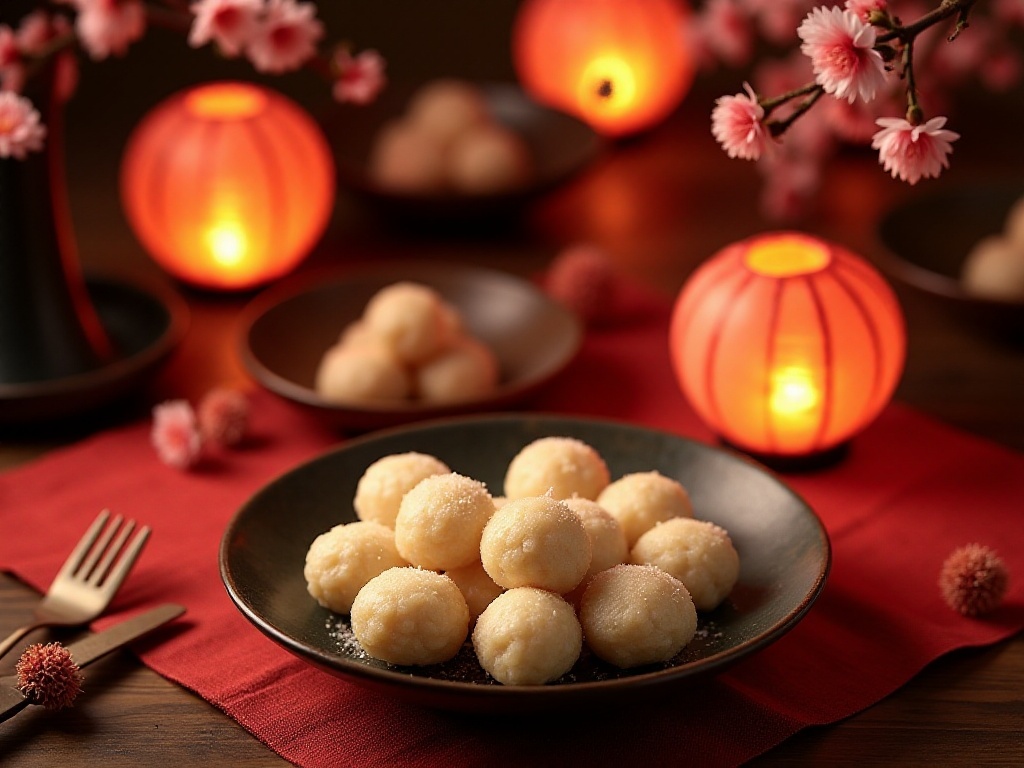
Introduction
Hello everyone! Today I want to share some kitchen life hacks that I've been practicing for over a year. Honestly, when I first started cooking, I was like a clumsy fool - even cutting vegetables was a struggle. But now, I can handle all kinds of cooking challenges, thanks to these practical tips. Whether it's simple home cooking or complex Western cuisine, I can handle it all with ease.
Ingredient Preparation
When it comes to ingredient preparation, it's truly a profound subject. I remember my first encounter with Italian salami - simply laying it out in a row seemed too ordinary. Later, at a friend's gathering, I had a spark of inspiration and tried arranging the salami slices into a rose shape. The process is actually quite simple: first, you need to place the salami slices along the edge of a glass, slightly overlapping each piece, like stacking playing cards. Then, you need to be particularly mindful of the pressure as you gently roll them toward the center. The final step is crucial - you need to gently support the bottom with your fingers and slowly lift the entire arrangement. And there you have it - a delicate salami rose!
When I first succeeded, I was overjoyed, and my friends were amazed, all taking out their phones to take photos. Some even said it looked as sophisticated as a Michelin restaurant's plating. To be honest, I failed several times at first. Sometimes the salami slices overlapped too much, making the whole shape look bulky; sometimes the spacing was uneven, resulting in a crooked "rose." But after multiple attempts, I can now easily complete this arrangement in just a few minutes.
Regarding herb preparation, I also want to share a discovery that particularly delighted me. I remember when I first started cooking, handling herbs was a nightmare. Whether it was basil, mint, or parsley, I picked them leaf by leaf until my hands were sore. Then I saw a video online and had an epiphany: herbs could be processed so simply! Just grab the herb stems and strip upward against the growth direction, and the leaves will automatically fall off.
This technique is especially a lifesaver when handling rosemary and thyme. Previously, it would take me at least ten minutes to pick the leaves off a bunch of rosemary, but now it only takes a few seconds. Moreover, the leaves picked using this method are particularly intact, unlike before when they would break into tiny pieces. This not only saves time but also makes the final product look more professional.
Besides these, I've also summarized some tips for handling other ingredients. For instance, when cutting onions, I now put them in the refrigerator for ten minutes first. This way, my eyes are less likely to tear up while cutting. When slicing ginger, I first gently scrape it with the back of a spoon - this not only makes it easy to peel but also retains more ginger juice.
When handling tofu, I first pat it dry with kitchen paper, then soak it in warm salt water for five minutes. This makes the tofu taste better and less likely to crumble. When frying tofu, it doesn't splatter water everywhere like before.

Utensil Cleaning
Speaking of utensil cleaning, I'm most proud of my "three-step cleaning method." This method is mainly for those particularly difficult-to-clean cookware, like stainless steel pans used for searing steaks or stir-frying. The first step is crucial - you must start cleaning while the pan is still warm. I pour in some warm water, slightly cooler than the pan's temperature. This prevents warping from temperature differences while softening food residue stuck to the bottom.
The second step is my secret technique - sprinkling some baking soda. Baking soda is magical; it not only neutralizes grease but also softens burnt-on food. I usually let the baking soda sit in the pan for a few minutes to work its magic. You'll see bubbles forming when the baking soda mixes with water - that's a sign it's working.
The third step is the final cleaning phase. I use a soft sponge with some dish soap to gently scrub the cookware. It's particularly important to use a soft sponge, not steel wool, as steel wool can easily scratch the surface. Using this method, even the most stubborn burnt-on food can be easily removed. After washing, I dry the cookware with kitchen paper to prevent rusting.
As for cleaning the oven door, that's truly a headache. I remember when I first got my oven, after baking a few pizzas, the door became very dirty. Initially, I tried using regular cleaners, but the results weren't satisfactory. Later, I discovered a perfect solution - using a professional cleaning scraper.
This scraper's design is very clever, with replaceable blades and an angle perfect for cleaning flat surfaces. When using it, I first spray some specialized cleaner on the oven door and wait a few minutes for it to work. Then, wearing gloves, I gently scrape off the dirt with the scraper. It's important to maintain even pressure and gentle movements to protect the oven glass while thoroughly cleaning off the dirt.
After cleaning, I wipe it down with a slightly damp cloth and finally dry it with clean kitchen paper. An oven door cleaned this way becomes particularly clean and easy to maintain. Now I give it a quick wipe after each use, preventing too much dirt from accumulating.

Storage Tips
When it comes to storage, I'm most proud of my method for organizing freezer bags. Previously, my drawer was a mess, with various sizes of freezer bags piled together, making it very difficult to find what I needed. Later, I discovered a particularly useful method - folding the freezer bags into triangles.
The specific folding method is like this: first lay the freezer bag flat, then start from one corner and fold it like origami into a triangle. Bags folded this way are not only very neat but also space-saving. Most importantly, they don't stick together like before, making them very convenient to retrieve. I now have a dedicated drawer in my kitchen for these folded freezer bags, and I can easily get the size I want whenever I need one.
Regarding cheese storage, I also have a particularly useful tip. I've noticed many people wrap cheese completely tight with plastic wrap. While this looks perfect, it becomes very troublesome the next time you want to use it, often struggling to find where the plastic wrap begins. So now I always leave a small corner when wrapping, just like leaving a corner for easy unwrapping when wrapping gifts.
This small corner not only makes it convenient to open next time but also allows the cheese to breathe appropriately, which better preserves its flavor. Moreover, I've found that cheese packaged this way actually lasts longer. Perhaps it's because proper ventilation can prevent moisture from forming on the cheese's surface, thus reducing the chance of bacterial growth.
Besides these, I've also summarized some other storage tips. For example, storing garlic and onions separately because they affect each other's shelf life. For herbs, I place their stems in water and loosely cover the leaves with plastic wrap, which keeps them fresh for several days.

Stain Removal
When it comes to stain removal, this is my specialty. Particularly for dealing with paint splatters on clothes, I've developed a complete treatment method. First, don't panic - even dried paint can be treated. My method is to first soften the paint with white vinegar, as its acidity can effectively break down the pigments in the paint.
The specific process is like this: first moisten the stained area with white vinegar and wait about five minutes for the vinegar to fully penetrate. Then, gently scrub with a soft toothbrush - the movement must be gentle to avoid pushing the paint deeper into the fabric. Finally, wash with regular detergent. I've successfully saved several beloved pieces of clothing using this method, including a white chef's coat and a dark blue apron.
Speaking of removing label adhesive, this is also a particularly annoying problem. Especially those labels on glass bottles and plastic containers - they always leave ugly adhesive residue after peeling. I discovered a particularly effective method: first use a hair dryer to blow hot air on the label to soften the adhesive. Then, while the adhesive is still soft, gently rub with olive oil. Olive oil can dissolve the adhesive without damaging the container's surface.
Containers treated this way become particularly smooth, with no trace of ever having had labels. Plus, olive oil has another benefit - it forms a protective film on the container's surface, making future labels easier to remove.

Practical Experience
These tips might look simple, but they're actually experiences summarized from countless failures. Take the salami rose for example - my first attempt was truly awful. The spacing of the salami slices wasn't right, and I used too much force when rolling, resulting in a crooked "rose" with no aesthetic appeal. But I didn't give up, instead continuously adjusting and improving, finally succeeding on my fourth attempt.
I remember once when preparing for an important family gathering, I planned to decorate the table with salami roses. I was so nervous that I made six roses just to select the three most perfect ones. But seeing the guests' delighted expressions, I felt it was all worth it. Through this process, I also learned a lot, such as ensuring uniform thickness of the salami slices and maintaining a certain angle when arranging them.
Actually, cooking is just like this - seemingly simple things require lots of practice and summarizing experiences. Like handling herbs - although I can now easily strip off the leaves, I initially often broke the stems or crushed the leaves. After multiple attempts, I finally found the most suitable pressure and angle.

Final Thoughts
Honestly, there are so many kitchen tips, and what I've shared here is just the tip of the iceberg. Everyone might have their own unique tricks, wisdom accumulated from daily life. For instance, I recently discovered a good method for drying salad - using an old pillowcase to spin dry. This method is not only effortless but also particularly effective.
I especially enjoy experimenting with these little tricks in the kitchen because I get particularly excited every time I discover a new method. Sometimes a small change can make cooking more relaxed and enjoyable. If you have any unique kitchen tricks, please tell me in the comments. Let's share and improve together, making cooking a fun-filled activity.
I believe that with these techniques, combined with a bit of patience and creativity, everyone can become a small culinary expert in their life. What's important isn't how sophisticated the techniques are, but enjoying the cooking process and feeling the joy of creating food. I hope these tips I've shared can help you make your kitchen life easier and more enjoyable.
Next
Practical Life Tips: From Theory to Practice, Making Your Life Easier and More Comfortable
A comprehensive guide exploring life hacks for productivity and efficient home management, combined with detailed insights into Chinese traditional festivals, focusing on Spring Festival customs, New Year's Eve preparations, and family reunion traditions
I Spent a Month Researching Life Hacks and Compiled This Guide to Dramatically Improve Quality of Life
A comprehensive guide covering practical life hacks and Chinese traditional festival customs, including home organization, kitchen management, cleaning tips, and cultural insights into Spring Festival, Lantern Festival, and Winter Solstice celebrations
21 Days to Transform Your Eating Habits: Making Healthy Living Less Burdensome
A comprehensive guide covering balanced nutrition, dietary control, exercise recommendations, and essential healthcare practices to help readers establish a scientific and healthy lifestyle
Next

Practical Life Tips: From Theory to Practice, Making Your Life Easier and More Comfortable
A comprehensive guide exploring life hacks for productivity and efficient home management, combined with detailed insights into Chinese traditional festivals, focusing on Spring Festival customs, New Year's Eve preparations, and family reunion traditions

I Spent a Month Researching Life Hacks and Compiled This Guide to Dramatically Improve Quality of Life
A comprehensive guide covering practical life hacks and Chinese traditional festival customs, including home organization, kitchen management, cleaning tips, and cultural insights into Spring Festival, Lantern Festival, and Winter Solstice celebrations

21 Days to Transform Your Eating Habits: Making Healthy Living Less Burdensome
A comprehensive guide covering balanced nutrition, dietary control, exercise recommendations, and essential healthcare practices to help readers establish a scientific and healthy lifestyle

